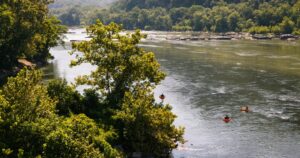A Visual Assessment of Jefferson County, West Virginia
This visual assessment report is a result of consultation services for the Jefferson County Historic Landmarks Commission (JCHLC). The report is intended as a preliminary assessment and list of general observations based on a windshield survey and driving tour of primary roadways within Jefferson County, led by John Allen from the JCHLC. Allen conveyed that the commission was concerned with changes already occurring in the landscape and with the ability to plan for the future of the county while protecting important scenic resources.

At the time of this report, the commission had already compiled a list of historic properties of significance as part of the three-tier landmark properties list. In addition, the JCHLC had recently indicated the areas along roadways in the county they felt were important for viewshed protection, many of which coincided with the proximity to historic properties and/or views from such properties. In addition to new county ordinances being proposed, they were also interested in the possibilities of utilizing the transfer of development rights (TDR) as a tool for protecting important viewsheds and hoped that our analysis could help bolster that effort.
Scenic America was tasked with these services in order to obtain a professional opinion about the visual character of the area. The scope of work for these services included the preparation of a preliminary scenic resources assessment/ viewshed inventory for primary public roadway corridors and priority viewsheds within the county. The analysis was to consist of a windshield survey and driving tour of key historic resources and views of concern, led by representatives from the JCHLC. Scenic America was tasked with providing a preliminary report to the JCHLC consisting of: documentation of notes and initial observations from the site visit; a preliminary list of important scenic resources, views and/ or scenic conservation issues; digital photography from site visit; and draft recommendations for moving forward with a more comprehensive scenic resources protection strategy or assessment for the areas of concern.